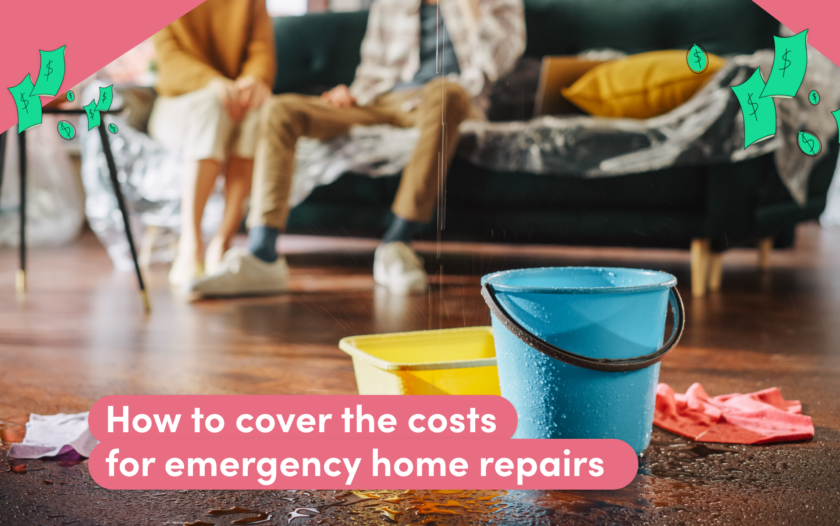How to Pay For Emergency Home Repairs
About Harrison
Harrison Pierce is a writer and a digital nomad, specializing in personal finance with a focus on credit cards. He is a graduate of the University of North Carolina at Chapel Hill with a major in sociology and is currently traveling the world.
Read full bio
At a Glance
We’re looking at that special moment when your home gets a mind of its own and decides it needs a makeover RIGHT NOW. Emergency home repairs can be a financial burden, especially if you’re not expecting them. There are several ways to pay for emergency home repairs, including homeowner insurance claims, personal loans, home equity loans, HELOCs, government programs, home refinancing loans, credit cards, savings, and disaster relief. It’s important to choose the best option for your financial situation and the severity of the repair. Emergency home repairs can be a major buzzkill, but don’t worry, we’ve got your back.
In this article, you’ll learn:
The average cost of an emergency home repair in 2022. This number is only for emergencies and does not include regular home maintenance, which adds an additional $2,467. $1,953


How much does an emergency home repair cost?
Well, it’s like a box of chocolates – you never know what you’re gonna get. A broken pipe might only cost you a few Benjamins, while a fire-damaged roof could set you back the price of a small car. The cost of an emergency home repair can vary depending on the severity of the damage and the type of repair needed.
Ways to pay for emergency home repair
1. Homeowner insurance claim
If the damage to your home is covered by your homeowner insurance policy, you can file a claim to have the repairs paid for. Check your policy to see what repairs are covered and how to file a claim.
2. Personal loans for home improvement
Personal loans can be used for any purpose, including emergency home repairs. Personal loans are typically unsecured, which means you don’t need to put up collateral. However, personal loans can have higher interest rates than other loans.
Find and compare the best loan options.
Use the filters below to refine your search

Sorry, we didn’t find any options that meet your requirements. Please try modifying your preferences.
Congratulations! You’re close to seeing your offers!
Please take a second to review the details you shared earlier
Sorry, we didn’t find any options that meet your requirements. Please try modifying your preferences.
3. Home equity loan
A home equity loan is a type of secured loan that allows you to borrow against the equity in your home. Home equity loans typically have lower interest rates than personal loans, but they can be riskier because you could lose your home if you default.
Learn more: How Does a Home Equity Loan Work?
4. HELOC
A home equity line of credit (HELOC) is a revolving credit line that allows you to borrow against the equity in your home as needed. HELOCs typically have lower interest rates than credit cards, but they can be riskier because you could lose your home if you default on the loan.
5. Government programs
There are several government programs that can help you pay for emergency home repairs, like the Federal Emergency Management Agency (FEMA) and the Department of Housing and Urban Development (HUD). Contact your local or state government office to see if you qualify for government assistance.
6. Home refinancing loan
If you have good credit, you may be able to refinance your home to get a lower interest rate and cash out some of the equity in your home. You can use the cash from the refinance to pay for your emergency home repair.
7. Credit cards
Credit cards can be used for emergency home repairs, but they should be a last resort. Credit cards typically have high interest rates, so you could end up paying more for the repair in the long run.
Compare: Best Credit Cards for Home Improvement
8. Through savings
If you have an emergency fund, you can use it to pay for your home repair. Emergency funds should typically cover three to six months of living expenses, but if you have enough money in your emergency fund to cover the cost of the repair, that’s a great option.
9. Disaster relief
If your home is damaged by a natural disaster, you may be eligible for disaster relief from FEMA or other organizations. Contact your local or state government office to see if you qualify for disaster relief.
How to avoid emergency home maintenance
1. Maintain your home regularly
Perform regular maintenance on your home, like cleaning your gutters, checking your smoke detectors, and changing your air filters. This can help to prevent minor problems from turning into major repairs.
2. Update your security system
If your security system is outdated, update it to include features like motion sensors and door and window alarms. This can help to deter burglars and prevent damage to your home.
3. Keep your HVAC up to date
Have your HVAC system inspected and serviced regularly. This can help to prevent problems like breakdowns and leaks.
4. Inspect property for other issues
Inspect your property regularly for other potential problems, like cracks in the foundation, leaks in the roof, and damage to the siding. If you see any problems, address them immediately.
Should you have an emergency fund for home repair?
Absolutely! You want to keep that peace of mind in your back pocket. Your emergency fund should cover at least three to six months of living expenses, but saving more is never a bad idea. Home repair nightmares are lurking around every corner, waiting for the worst time to strike.
FAQs
Home warranties typically cover appliances and systems that break down due to normal wear and tear. However, home warranties typically don’t cover damage caused by natural disasters, accidents, or negligence. It’s important to read your home warranty policy carefully to see what repairs are covered and what exclusions apply. Financial experts recommend saving at least 1% to 4% of your home’s value for emergency home repairs. You may not need to save as much if you have a newer home with all new systems and appliances. However, you may want to save more if you have an older home or a fixer-upper. Homeowners insurance typically covers damage to your home caused by certain events, like fires, storms, and thefts. However, homeowners insurance doesn’t cover all types of damage. For example, homeowners insurance typically doesn’t cover damage caused by wear and tear or neglect. It’s important to carefully read your homeowner’s insurance policy to see what repairs are covered and what exclusions apply. If you need to fix your house but can’t afford it, there are a number of things you can do. First, see if you qualify for government assistance or disaster relief. You can also try to negotiate with the contractor to lower the price of the repair. If you cannot afford the repair, you may need a loan. However, compare interest rates and terms from different lenders before you choose a loan.









